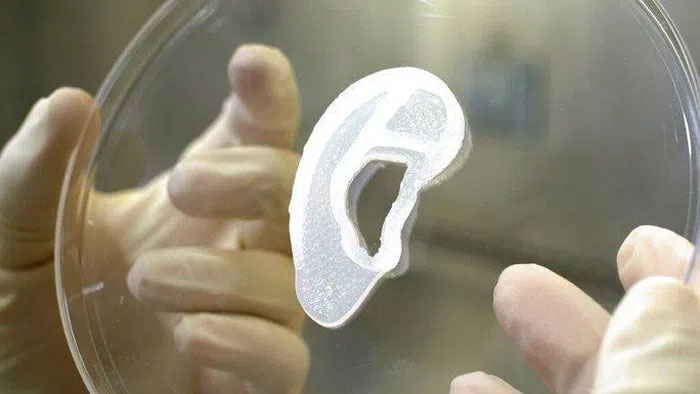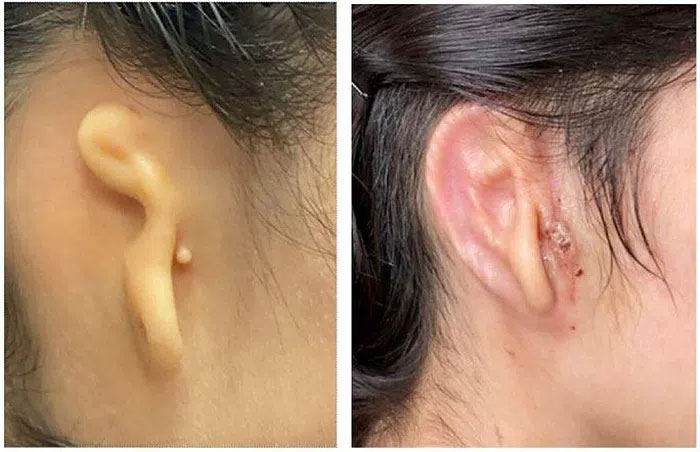The groundbreaking surgery was led by Dr. Arturo Bonilla, the founder and director of the Congenital Ear Deformity Institute Microtia in San Antonio, Texas, USA.
According to Medical Xpress, the surgery was conducted as part of an early-stage clinical trial to assess the safety and efficacy of 3D-printed ear implants for individuals with microtia, a congenital condition characterized by an underdeveloped outer ear, a deformity resulting from improper formation.

The ear gradually “maturing” in the laboratory thanks to a 3D-printed “scaffold” that is a perfect replica of the healthy ear – (Photo: 3DBio Therapeutics)
Currently, patients with microtia receive ear reconstruction through grafting cartilage from their rib or using synthetic materials (porous polyethylene – PPE) to recreate the outer ear.
This new technique creates a more perfect ear for patients: it is entirely made of biological material, a part of the patient’s body, while also achieving an appearance that closely resembles the other ear, far superior to traditional rib cartilage reconstruction.
The new implant, named AuriNovo, was developed by 3DBio Therapeutics in collaboration with the Congenital Ear Deformity Institute Microtia.
The process includes 3D scanning the opposite ear of the patient to create a design, then collecting a sample of their ear cartilage cells and culturing them to an adequate amount.
These cells are mixed with collagen-based bioink, shaped into the outer ear with the aid of a biodegradable 3D-printed scaffold, allowing the new ear to develop according to the original design.

Cells cultured into a “young ear” before being grafted onto the 3D print – (Photo: 3DBio Therapeutics)
The clinical trial is expected to be conducted on 11 patients and is taking place in California and Texas. The first patient mentioned is a young girl who received the ear graft over a month ago. Currently, the surgical site has nearly healed completely, and the implant has adapted perfectly to her body.

Photo taken before surgery and on May 31, one month post-surgery – (Photo: 3DBio Therapeutics)
According to Dr. Bonilla, the ear grafting using 3D printing technology also leads to less invasive surgery compared to traditional methods, as it eliminates the need for rib cartilage harvesting and simplifies the reconstruction process significantly.
According to the Centers for Disease Control and Prevention (CDC), microtia occurs in 1 in 2,000 to 10,000 newborns, with varying degrees of deformity. Factors that may increase the risk include gestational diabetes or a maternal diet low in carbohydrates and folic acid.


















































